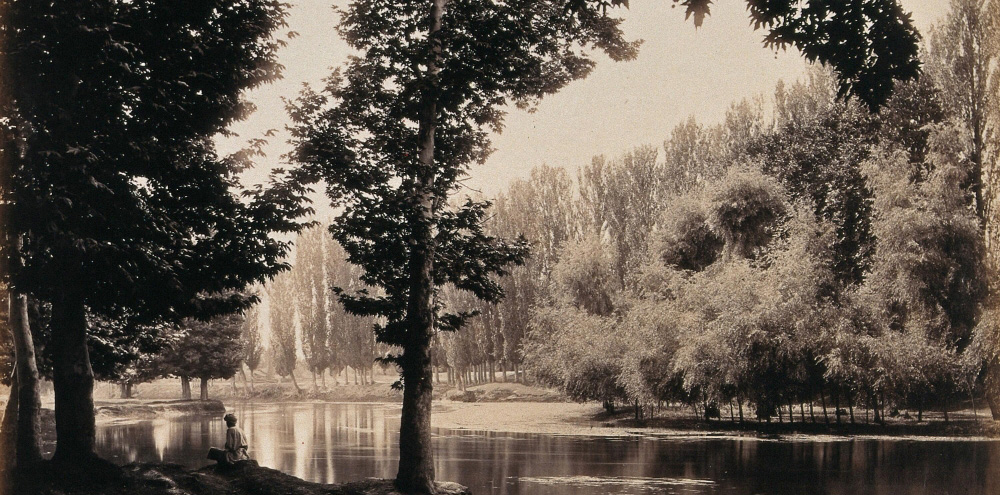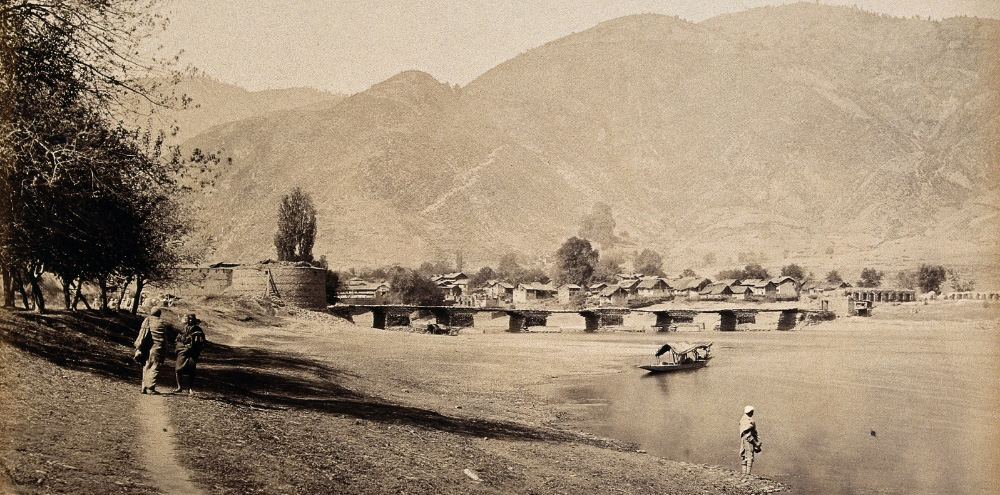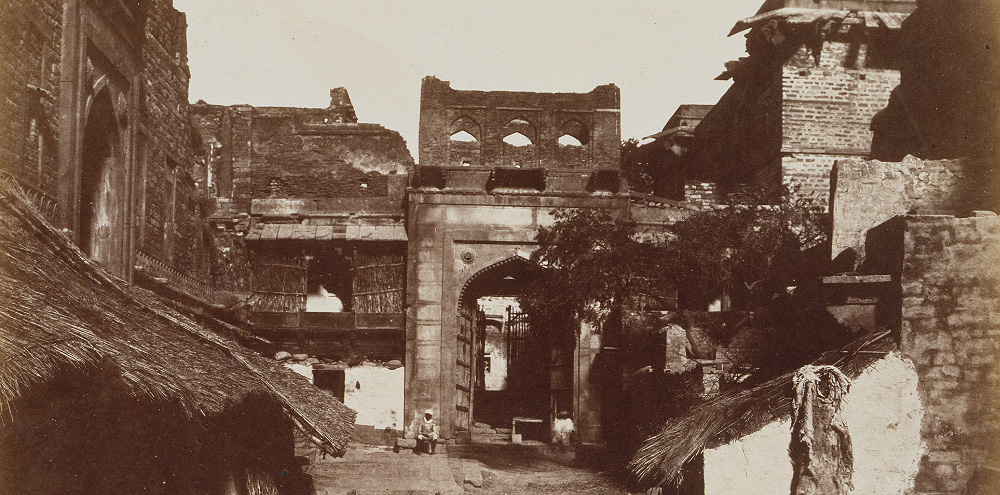Photographic Practices: Rewriting History Through a New Lens
The modern technology of photography arrived in India in 1840, within a year of its invention in Europe. Over the next few decades, well-known amateur European photographers, such as John Murray (1809–1898), Felice Beato (1832–1909) and Samuel Bourne (1834–1912) captured India’s landscapes, buildings, ruins and indigenous populations categorised by caste hierarchies and racial ‘types’. As a result of these voluminous and grand-scale projects, the early history of photography in India has sometimes been regarded — incorrectly — as an extension of the colonial relationship and led only by British and European photographers. Although Indian photographers — such as Raja Lala Deen Dayal (1844–1905) — have made important contributions to this field since nearly the beginning of this history, 19th-century colonial photography left an enduring mark, mostly as a result of its crucial role in asserting power. Rather than objectively documenting the social realities of India, these images often adopted a romanticising lens and perpetrated an imaginary of India as a distant, timeless and exotic land in need of modernisation and colonial intervention.
While photography in the colonial era was largely documentary in style, modern and contemporary Indian artists have used the camera as a tool for creative experimentation, and to reflect upon the histories of the use of the medium and of image-making itself. A contemporary artist who engages with these histories most directly is Pushpamala N (b. 1956). Let’s look a little more closely at her layered practice that pointedly critiques certain dimensions of the history of photography through the use of satire, humour, wit and a degree of cynicism.
Critiquing the Colonial, Patriarchal Gaze: Pushpamala N
Born in Bangalore (present-day Bengaluru) in 1956, Pushpamala N has a master’s degree in sculpture from the Faculty of Fine Arts, MS University, Baroda (now Vadodara). She began working with the camera in the mid-1990s, also incorporating elements of video and performance in her practice. Through her photographic works, she pointedly critiques certain dimensions of historical documentation and makes references to popular visual culture. Her work has centred on ‘photo performance’, where she adopts different identities and guises through painstakingly produced self-portraits. In these, she often takes on the role of the protagonist and director instead of the photographer behind the camera. Let’s look at the body of her work that demonstrates this approach, and also reveals to us how colonial and patriarchal gazes so often overlap.
Native Women of South India: Manners and Customs
In her series Native Women of South India: Manners and Customs (2000-2004), made in collaboration with British photographer Clare Arni (b. 1962), Pushpamala deconstructs historical images of Indian women. Toda (2004), which you see here (Image 12), offers a satirical commentary on the colonial practice of documenting ‘natives’. The artist presents herself as a woman belonging to the South Indian Toda tribe and mirrors the style of 19th-century British ethnographic images in her photographs. In another image from the series (Image 13), she stands in front of a chequered backdrop, similar to the one used by the British to measure bodies of ‘natives’ (Image 14), as a way of critiquing the colonial practice of documenting the colonised ‘Other’. In Pushpamala’s photograph, the backdrop does not fill the whole frame; rather, two hands can be seen on either side, appearing to ‘hold it up’. In re-enacting and parodying the colonial practice, she explores the idea that the stereotypes of Indian women are just as fictitious as her elaborate performance.
Mother India: The Body and Nationhood
In the series titled Mother India (2005 onwards), Pushpamala traces the history of images associated with the country’s freedom movement. The narratives of these photographs are centred around powerful female protagonists from Indian mythology. One such work, Kichaka-Sairandhri (Image 16), based on a painting by Raja Ravi Varma (Image 17), draws on a story from the Hindu epic, the Mahabharata. Here, we see a representation of the mythological princess Draupadi, a central figure in the epic — who is in disguise as Sairandhri, a female attendant — resisting Prince Kichaka’s antagonistic gaze as he was known for having assaulted her. Her gesture in this image can be understood as a metaphor for resistance against colonial rule. Images like these were circulated on postcards during the 19th century as cryptic messages of the independence movement so that they could evade British censorship.
In another work (Image 18), Pushpamala stages herself as the fearsome Hindu goddess of death, Kali. Her photograph draws reference from a painting produced in Calcutta around 1908, which was later widely circulated through prints (Image 19). True to the original figure, Pushpamala’s depiction of Kali is shown with her red tongue sticking out and a garland of skulls around her neck. The imagery that she replicates was used in various ways during the nationalist movement, including to sell a brand of cigarettes that was marketed as a ‘Swadeshi product’. Like other works from this series, she alludes to the Swadeshi desire to overcome colonial forces, represented subtly here by the image of a dark-skinned Kali placing her foot on the light-skinned body of the Hindu God, Shiva.
Pushpamala’s photographs also engage with art historical narratives, as we see in her reconsideration (Image 20) of Abanindranath Tagore’s iconic 1905 painting, Bharat Mata (Image 21), that we studied earlier. Closely mirroring Tagore’s figure, Pushpamala depicts herself with four arms dressed in a saffron-coloured robe. Through her reinterpretations of historical images, Pushpamala entangles different temporalities and reexamines the idea of nationhood and the representations of the female body through a contemporary lens. As she has stated, ‘The personal is political, and I am seeing the body also as the political body and connecting it to the nation-state’.
A seismic shift in the approach to photography since its conception — from being used as a tool for documenting subjects like landscapes and people, to engaging with socio-political discourse and historical archives more critically — is unsettling and decentering inherited historical narratives. In fact, the history of photography in India is an important subject we’ll be looking at in more depth in a different course altogether. Pushpamala N is one of many contemporary artists engaging with the early history of photography in India. Her work opens a window to understanding how lens-based media also paved the path for experimentations with video, installations and performance art, which we will look at in the next Topic.
This Topic mentions a number of important photographers, artists and institutions in relation to the advent of the medium of photography in the country, and the history of its practice. We recommend that you explore the following articles and clusters from our website to learn more!
- John Murray
- Felice Beato
- Samuel Bourne
- Lala Deen Dayal
- Pushpamala N
- Faculty of Fine Arts, Maharaja Sayajirao University, Baroda
- Abanindranath Tagore
Further Readings



















